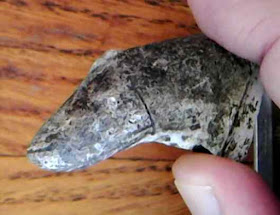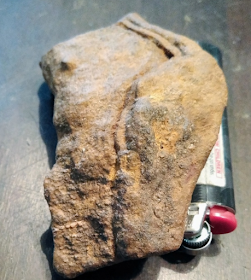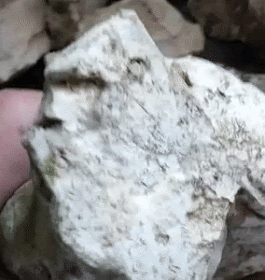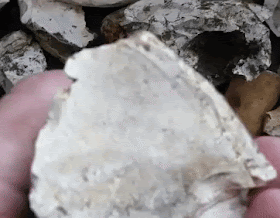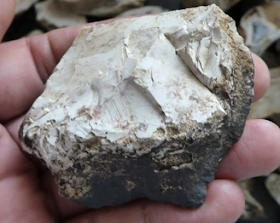About the Forum.
Firstly I would like to thank all who have joined in with our forum
Portable Rock Art and Figure Stones it has been a positive experience that is helpful and informative to all who are interested in studying this most ancient art form, thank you to all for your posts and comments, but more importantly your additions to the scientific study. Science is what we can observe and test and demonstrate, and this is exactly what many of your finds reflect. Special thanks go to
Rocky,
Baggy and
Greglafla for welcoming members, positive commentary and general helpfulness.
I have selected a few of my favorite stone find submissions and the names of the respective researchers with some additional commentary to post here. (For those who have not joined our forum).
Rocklith76 found this in Georgia USA, this bird effigy is probably best described as a piece of portable rock art describing a thunder bird. This could easily be ascribed to known Native American Indian cultures, however other symbology appears present making this poly iconic (ape like head profiles), so i would suggest the term 'figure stone', that being the case.
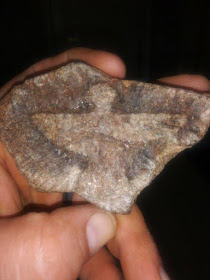 |
| Thunder Bird Effigy Stone. |
Another find from
Rocklith76 in Georgia, this one i find to be highly poly iconic showing common glyph content and common convention. I find this one amazing for skill in fore-fort of design, combining many figures in a neat package, the artist a true genius. Pigment created eye shapes also appear present. Suggested figuration for this figure stone includes, duck, mammoth half, cloaked figure, ape face, fish half, pointing finger, those and more can be seen in the other pictures on the forum.
 |
| Bird effigy Figure Stone |
Another great find from Georgia, this time by
Robert Firesheets. I suggest the main subject here as the front half of a horse grazing, head turned backwards, an incised line to detail the hoof. Other symbology is likely present as well, face profiles can be seen along the left edge.
Anil from England has also been responsible for some very impressive finds, this next one is also proof of the validity of our study, as common convention and figuration are present. Very detailed bear half figuration can be seen facing right, and along the right, facing left, a detailed mammoth half depiction is also present, aligned upright with the bear. More subtle imagery can also be seen, and some potentiality unknown creature depictions.
This find also from
Anil shows some well known faces and convention, which crop up often in poly iconic figure stones. This stone also features heavy pigment use, detailed eye shapes and staggering complexity. Can you find what looks like the head description of a dinosaur? Picture comparison and highlighting thanks to
Rocky over at
The Rock Art Museum
This one is a
Tim Banninger find from Kansas. This find has been heavily flaked and shows numerous face descriptions.
This one from Judy Eagerton in the United States also shows some common figuration and convention. This one may take a little time to appreciate the Gorilla image, although the 'Gorilla strut' is a well documented glyph in European finds, this one is more like a sculpture than the more common flat glyph profile style. A subtle elephant half and bear half can also be seen, and a face, upper central left. Can you find what looks to be a top half of a T-rex depiction in this find?

